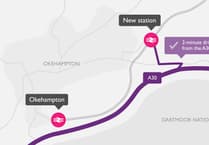You could face a fine of £1,000 if you break the Highway Code when allowing an ambulance to pass you. Car insurance expert at Confused.com, Alex Kindred, says:
“Although it comes with good intensions, driving, breaking, or manoeuvring dangerously to let an ambulance pass can be a great safety risk. Hearing a siren or seeing flashing lights can cause you to react quickly, but try not to panic.
“It’s important to move aside for an emergency vehicle, but try to be mindful of traffic signs and comply with the Highway Code when doing so. This includes driving through a red light or stopping in a bus lane. Not only is breaking the Highway Code a safety risk, it could also cost you £1,000 in fines.
“It’s not always clear what drivers are expected to do in these circumstances, so if you’re unsure, our emergency vehicle FAQs should have the answers to help.”
What to do if there’s an ambulance behind you? Or a police car, or a fire engine?
If an emergency vehicle is behind you with flashing lights and its siren blaring, it’s saying: I’m approaching so please move safely but quickly out of the way.
Try not to panic and calmly and quickly find a spot to pull over, or slow down, so the vehicle can pass you.
Don’t just focus on the emergency vehicle either, other cars on the road may not have noticed it so be aware of how they are reacting. If you slam your brakes on for an ambulance but the car behind hasn’t spotted it, you could be risking another accident happening.
What does the Highway Code say about emergency vehicles?
Part five of the Highway Code says:
“You should look and listen for ambulances, fire engines, police, doctors or other emergency vehicles using flashing blue, red or green lights and sirens or flashing headlights, or Highways Agency Traffic Officer and Incident Support vehicles using flashing amber lights.”
The Highway Code also lays out the course of action drivers should take when approached by an emergency vehicle:
• Don’t panicConsider the route of the vehicle and let it passComply with all traffic signsIf necessary, pull to the side of the road and stopTry to avoid stopping before the brow of a hill, a bend or narrow section of roadDon’t endanger others by mounting the kerbDon’t brake harshly on the approach to a junction or roundabout.
Here are some other tips to help you in certain circumstances:
Check your mirrors
If you hear a siren or spot an ambulance blue light, check your mirrors. It’s not always clear where an emergency vehicle is until it’s almost on top of you.
Watch for tail lights ahead and for flashing blue lights behind you. If in doubt, slow down and pull over.
Junction box issue
Junctions are a pinch point at the best of times, but remember to always be aware of pedestrians.
If you stop at a junction, pedestrians might not realise what’s going on. Slowing down ahead of the junction should give even the most unaware of pedestrians pause for thought.
Scene of the incident
If you find yourself at the scene of an incident, don’t add to any problem by loitering or parking inconsiderately.
Ambulances and fire engines in particular take up a lot of space on the road.
However, if your car is clipped by an emergency vehicle responding to a 999 call you should be covered by your car insurance policy.
That’s unless your car is parked unlawfully, such as on double yellow lines. Drivers who rely on hazard lights rather than parking properly are also unlikely to receive much sympathy from their insurer.
Here are some important questions and answers to consider:
Can you jump a red light for an emergency vehicle?
No, if you pass through a red light, a yellow junction box or enter a bus lane you may be considered to have driven unlawfully and could face a fine and points on your licence.
Can you speed to help emergency vehicles?
No. Emergency vehicles respond to all manner of incidents, including drivers who exceed the speed limit and crash, so your good intentions might just add to the problem.
Should you use the hard shoulder?
This isn’t a good idea as the emergency services might resort to the hard shoulder to by-pass traffic on motorways that are clogged up by an incident somewhere up the line. And if it’s a smart motorway, that hard shoulder could disappear.
Should you pull up onto the pavement?
No. You might be moving too fast to judge the stopping speed and could endanger pedestrians. Likewise, if you stop on a corner, people and traffic ahead might not be able to see the incoming emergency vehicle.
What if I just don’t know what to do?
You might be popping to the shops for a pint of milk or a loaf of bread, and suddenly all hell breaks loose. But bear in mind that the person behind the wheel of the ambulance, fire engine or police car is trained to drive under this level of pressure. You are not. All you need to do is safely pull over and let them pass.
What do different siren sounds mean?
Sirens on emergency vehicles will change regularly in the way they sound. This is to help drivers work out where the emergency vehicle is. The changing siren isn’t meant to tell you anything or fluster you. They all mean the same thing - the vehicle is responding to an emergency - and you should act accordingly.
What do the different coloured lights mean?
It doesn’t matter if it’s a red, green, blue, or amber light you’ve spotted on an emergency vehicle, you should act in the same way and calmly and quickly allow them to pass by.




